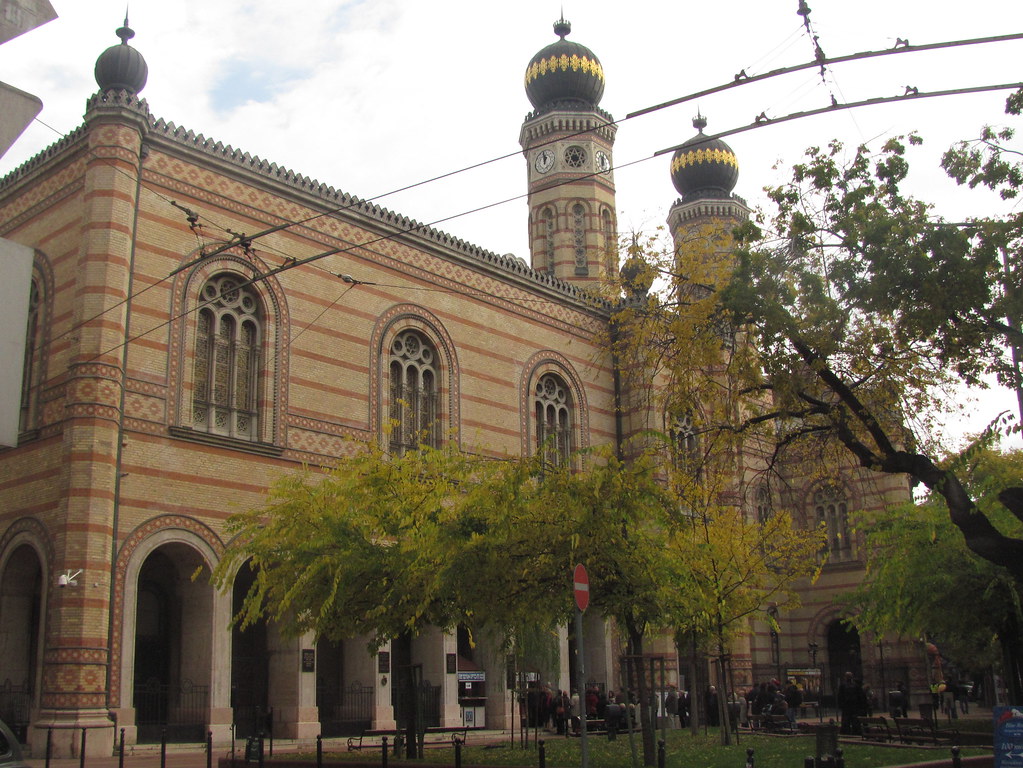The Great Synagogue of Budapest - built in the 19th century, badly damaged during World War II and renovated in the 1990s after the fall of Communism:
The synagogue is the second largest in the world (largest is in New York):
Stunningly beautiful inside:
Outside is the Raoul Wallenberg Memorial Garden. This weeping willow memorial has the name of a Jew from the Budapest ghetto who died in the holocaust inscribed on each leaf:
The tree stands next to the Garden of the Just, where the names of Righteous Gentiles known to have helped and protected the Jews of Budapest are recorded - including Raoul Wallenberg, the Vatican's Apostolic Nuncio, and the Catholic father of the Jewish lady who guided us round the synagogue:
While the pre-war and present day Jewish community is focused on the district surrounding the Great Synagogue in Pest, in the middle ages there were many Jews living in Buda. We stumbled on this tiny medieval Jewish prayer house, where original wall paintings have been uncovered:


















